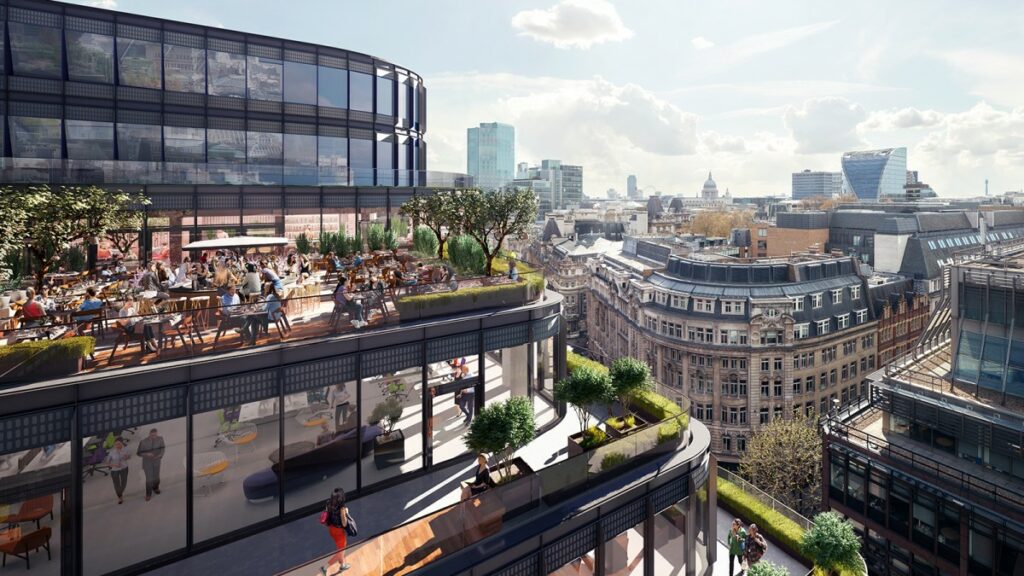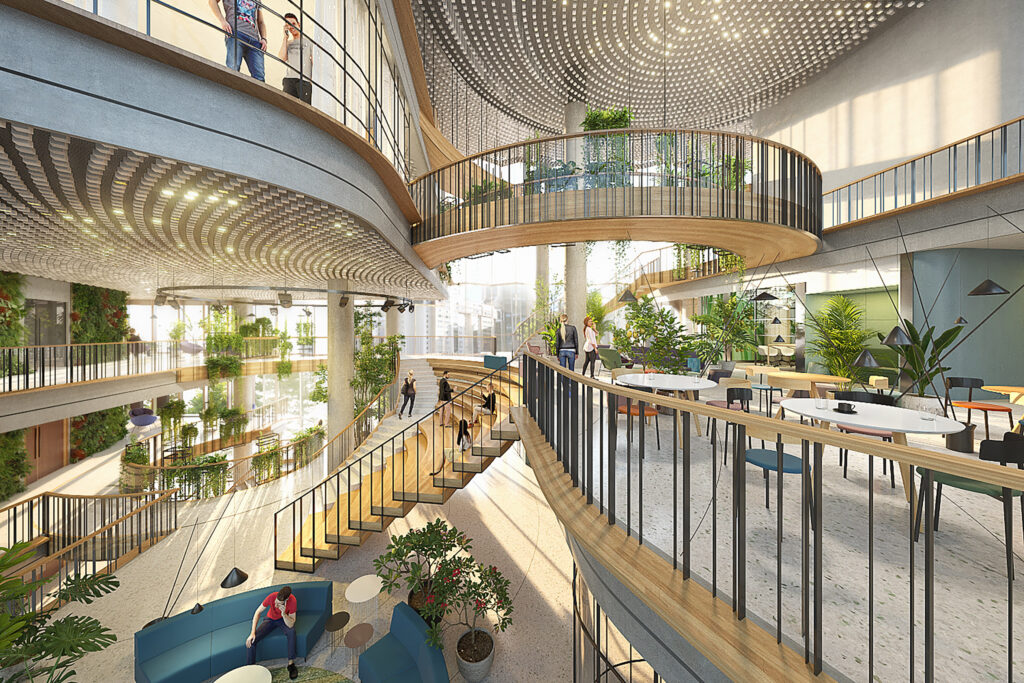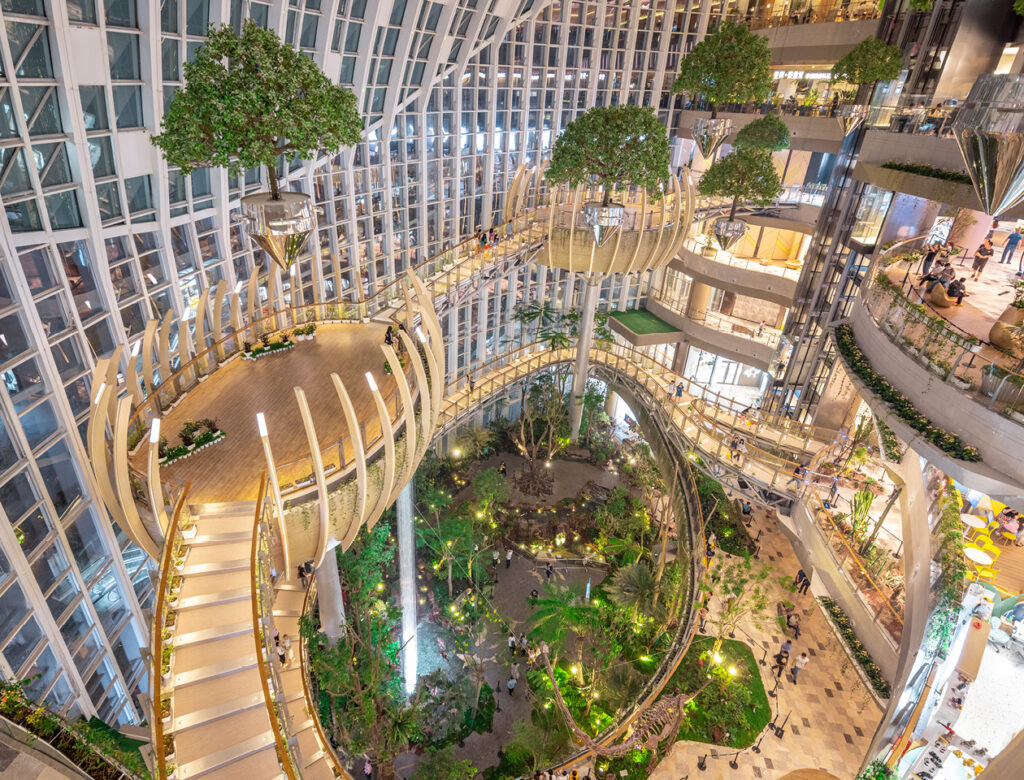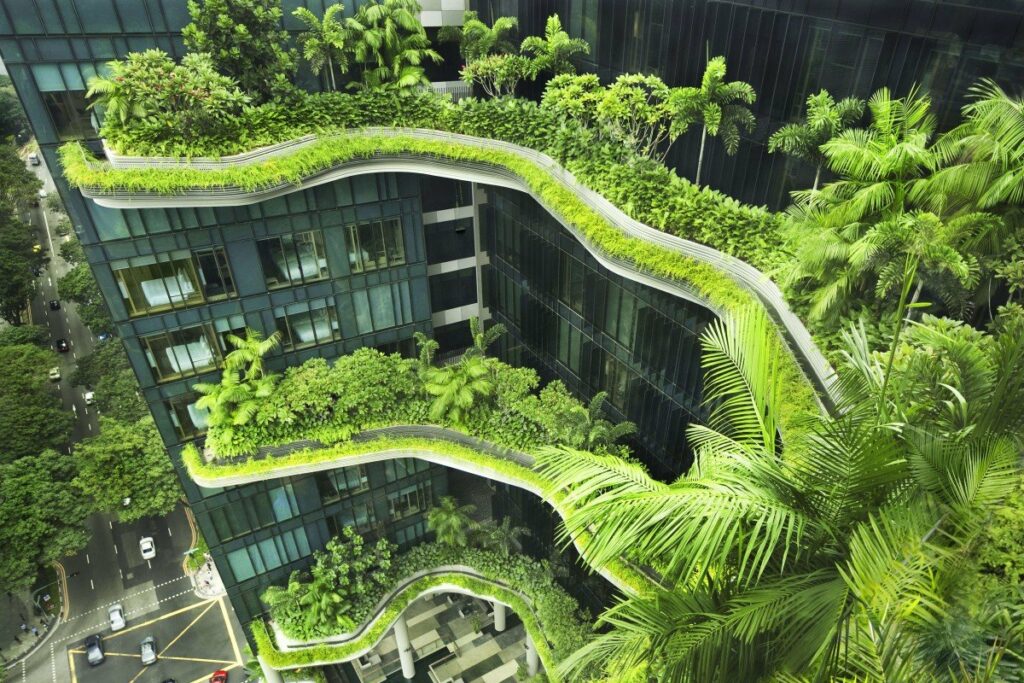Healthy Buildings for All – It is time to put people’s health and well-being at the centre of the built environment. For the past decade, sustainable buildings and ‘green’ living have been a popular trend in the world of real estate. But now healthy buildings and spring-being environments are trending as the latest buzzwords.
Yes, the term healthy buildings have become commonplace, and quite often it is interspersed or mixed with terms like ‘Green Buildings’ and ‘Sustainable Buildings’. The World Green Building Council’s publication Health, Wellbeing, and Productivity concedes that there are strong studies that suggest green design features of buildings lead to healthier, more productive occupants. Building on this, we are going to throw light on the 7 most important pillars of perfectly healthy buildings.

The design and methods of construction of our built environment – our homes, workplaces and cities – have an enormous impact on both the global environment and locally on the communities that inhabit them. Creating a sustainable built environment is, therefore, a crucial part of the conversion needed to achieve true sustainability. Sustainable Building A very large proportion of the energy used in the world, and the greenhouse gases that are released from this energy use, is connected to the building sector. No move towards sustainable development can go ahead without radical changes in architecture,
Construction and spatial planning. We are now seeing a huge drive to conserve energy, increase efficiency and create zero-carbon buildings, all of which are vital in reducing the environmental impacts of buildings. But building sustainably must also take a broader approach, including the whole impact of a building – on the environment,
People’s health and social well-being – throughout it is a whole lifetime. To build truly sustainable buildings and cities, architects and planners need to think holistically and have a comprehensive grounding in all aspects of sustainable building. Healthy buildings deal primarily with the interior environment, i.e. how to construct buildings that people feel good in, but also how to do so without adverse effects on construction workers and the environment.
In some climates, people spend more than 90 per cent of their time inside. This means, of course, that people are highly influenced by the buildings they live and work in. This concept can be compared with the kind of clothes we wear and how their characteristics greatly influence us and our wellbeing Healthy Construction Materials – Choosing Materials From Environmental and Health Viewpoints Construction materials are described here according to their chemical content and their influence on the environment from a life-cycle perspective.

A general assessment is given of materials that have the least impact on the environment and health. Supply – Choosing Services for Ventilation, Power and Water Which supply options should be chosen to get a comfortable interior climate with pleasant warmth and low electromagnetic fields, and how can a building be protected from water damage?
How should ventilation, electricity and pipework systems be designed? Design – Choosing Good Design for Resource Conservation and Wellbeing Even with healthy materials and good supply systems, things can go wrong if the design isn’t right. How can problems with moisture, radon and noise be avoided?
How can building design achieve ease of cleaning and maintenance? Materials and Construction Methods It is difficult to choose the right material since a lot of knowledge is required. For example, knowledge of chemistry is needed since chemicals influence health and the ecosystem.

Furthermore, information is needed about resource consumption and the environmental impact of materials in production and use. The environmental impact of material from cradle to grave can be measured using life-cycle analysis (LCA) and reported in the form of an environmental profile.
Some analysts study materials from cradle to cradle, as nothing should be wasted in a sustainable society. The next problem is to consider all the facts and make a judgement. It is a matter of understanding how a material influences the interior environment and the health of users,
how the management of the material influences the health of construction workers, as well as how the use of the material impacts the ecosystem.
7 Foundations Of Healthy Buildings
1. Ventilation
Ventilation in buildings is very important to take in fresh air from the outside and dilute occupant-generated pollutants like carbon dioxide and product-generated pollutants like VOCs i.e., volatile organic compounds. If mechanically ventilated, a structure’s mechanical system is designed to pull in the fresh outdoor air, filter it and deliver it to its occupants.
While constructing or renovating a structure, one should meet or exceed local outdoor air ventilation rate guidelines to control indoor causes of odours, chemicals, and carbon dioxide. Filter outdoor and recirculated air with a minimum removal efficiency of 75% for all particle size fractions including nano. Avoid outdoor air consumption at street level or near other outdoor sources of pollutants. Commission systems, conduct regular maintenance and monitor ventilation in real-time to prevent and resolve ventilation issues quickly.
2. Air Quality
Buildings having poor ventilation rates have very poor air quality and are reported as offensive and stuffy. This type of air quality makes the indoor environment very uncomfortable to work in. That is not all, the increased pollutants produce a range of harms. Poorly ventilated structures promote health issues like fatigue, shortness of breath, sinus, cough, eye, nose, throat and skin irritation, nausea, and dizziness. Such symptoms stemming from prolonged exposure to poorly ventilated spaces are also called sick building syndrome (SBS).
To improve the air quality, the builders, designers, and homeowners should select building materials with low chemical emissions which can significantly help in checking the sources of volatile and semi-volatile organic compounds.
3. Moisture
Buildings which are too damp or too dry can be bad for occupants’ health. Excess moisture or dampness and mould growth in buildings have been linked with some upper respiratory symptoms (nasal obstruction, sneezing, runny or itchy nose) and respiratory diseases, especially asthma, in children and adults.
Moisture in buildings comes from both outdoor and indoor sources: rain, snowmelt, groundwater, construction materials, plumbing operations, kitchens, shower rooms, swimming pools, and wet surfaces such as mopped floors. It is important to conduct regular inspections of roofing, plumbing, ceilings, and HVAC equipment to identify sources of moisture and potential condensation points. When moisture or mould is found, directly address the moisture source and dry or replace contaminated materials. Identify and remediate the underlying source of the moisture issue.
4. Lighting And Views
Lighting affects our health. It affects our state and circadian rhythms. Poor lighting is linked to glare, headaches, eyestrain, skin conditions, and various types of sight loss. Lighting is an essential element in quality environments that support health and wellness while overcoming energy use.
Provide task lighting for convenient viewing. Provide direct lines of sight to exterior windows from all possible zones in the building structure.

5. Thermal Health
The thermal comfort of a building is extremely important for well-being, health, and productivity. A loss of thermal comfort can cause stress in the occupants living in the building. When they are too heated, people can feel tired; when too cold, they will be excited and distracted.
A building structure should meet the minimum thermal comfort standards for temperature and humidity and should be able to keep thermal conditions consistent throughout the day.
6. Noise
Acoustic comfort is the well-being and feeling of a building or house occupants regarding the acoustic environment (noise-producing transport, equipment, exercise, neighbourhood). Providing acoustic comfort consists of reducing intruding noise and maintaining satisfaction among residents (home and workspace).
7. Safety And Security
The safety and security of a building are something that must be at the top of each organisation’s priority.
Tags: sustainable buildings, Green Buildings, zero-carbon buildings, life-cycle analysis, building structure.

